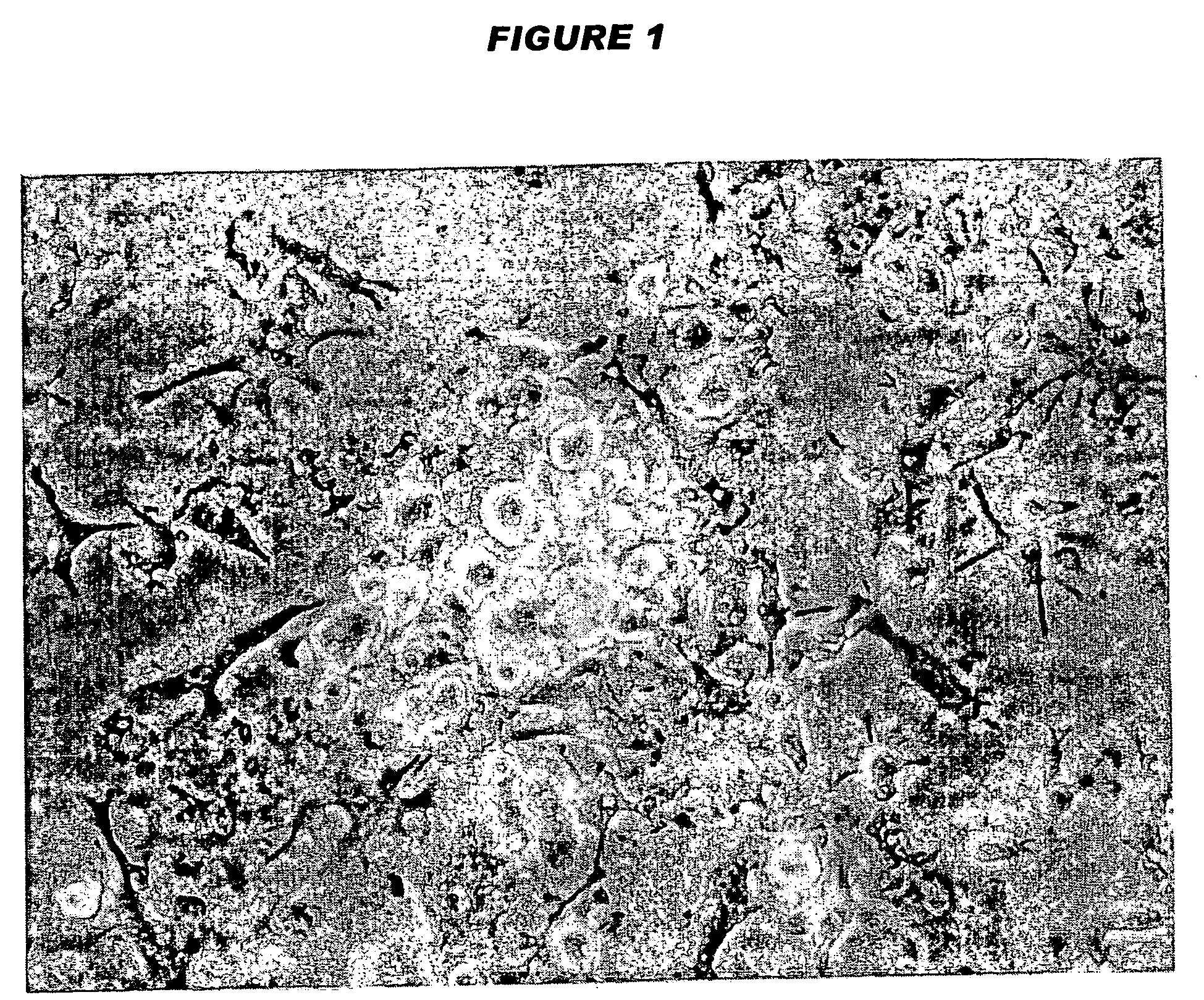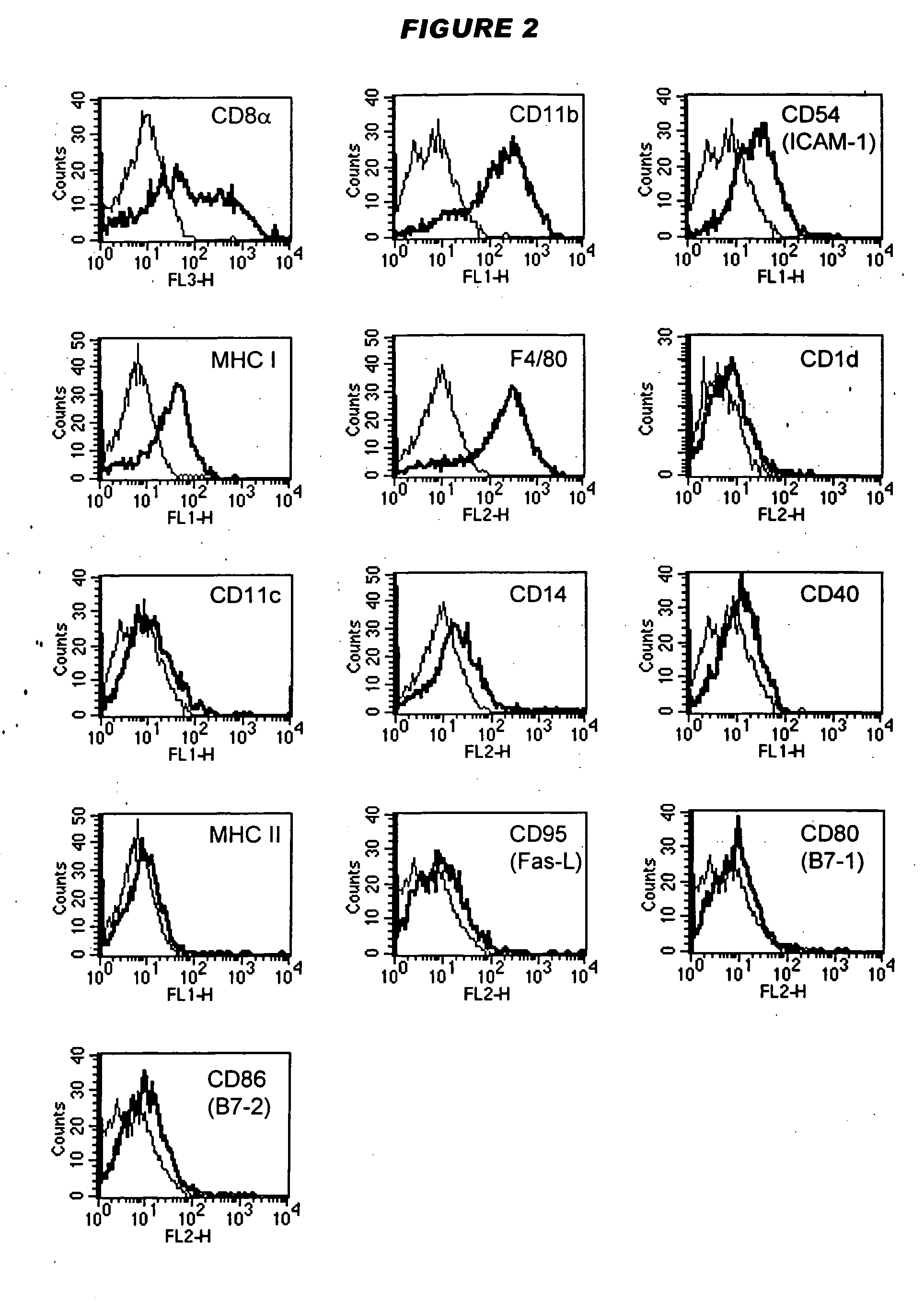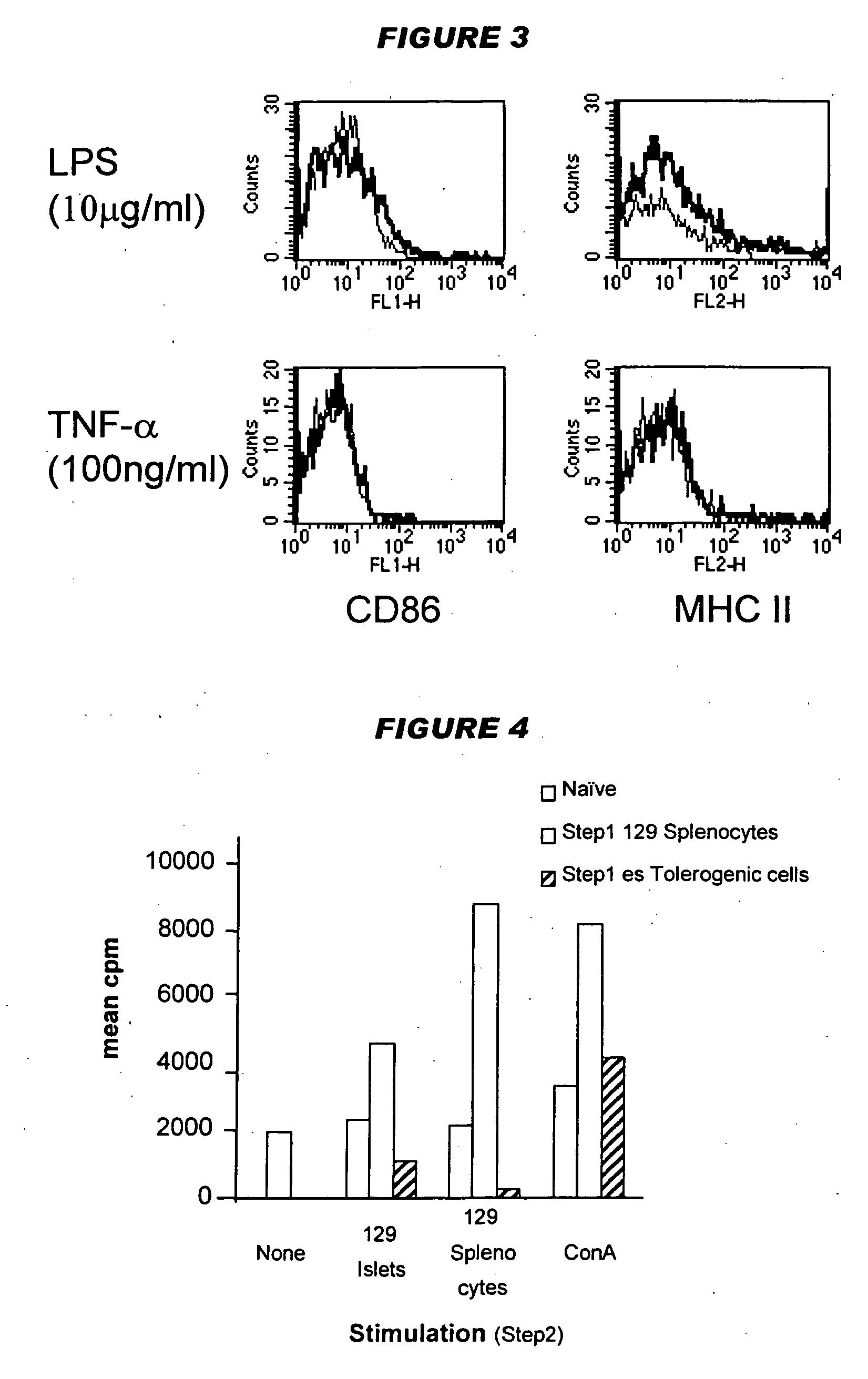Tolerogenic antigen-presenting cells
a technology of tolerogenic antigen and antigen-presenting cells, which is applied in the field of transplantation, can solve the problems of individual's own tissue destruction, immune system malfunction, and the same immune system producing undesirable effects
- Summary
- Abstract
- Description
- Claims
- Application Information
AI Technical Summary
Benefits of technology
Problems solved by technology
Method used
Image
Examples
Embodiment Construction
1) Derivation and Maintenance of ES Cells from 129 / P2 Mice
[0106] HM-1 murine embryonic stem cells were obtained from the 129 / P2 mouse strain [80]. Tissue culture flasks were pre-coated with 0.1% gelatin in PBS to promote adherence of the HM-1 cells and they were maintained in Complete Medium (BHK-21 media supplemented with 10% heat-inactivated fetal calf serum (FCS), 1 mM sodium pyruvate, 2 mM L-glutamine, 2 mM non-essential amino acids and 50 μM 2-mercaptoethanol). In order to keep the cells in an undifferentiated state, leukaemia inhibitory factor (LIF) was added to the media. Cells were kept in incubators at 37° C. with 5% CO2.
2) Generation of Tolerogenic Cells from HM-1
[0107] When a T25 flask of undifferentiated HM-1 cells were confluent, they were trypsinised lightly, so clumps of cells appeared as opposed to all single cells, washed at 900 rpm for 2 minutes to allow clumps of cells to collect at bottom of tube, supernatant carefully removed and clumps gently resuspended i...
PUM
| Property | Measurement | Unit |
|---|---|---|
| concentration | aaaaa | aaaaa |
| concentration | aaaaa | aaaaa |
| concentration | aaaaa | aaaaa |
Abstract
Description
Claims
Application Information
 Login to View More
Login to View More - R&D
- Intellectual Property
- Life Sciences
- Materials
- Tech Scout
- Unparalleled Data Quality
- Higher Quality Content
- 60% Fewer Hallucinations
Browse by: Latest US Patents, China's latest patents, Technical Efficacy Thesaurus, Application Domain, Technology Topic, Popular Technical Reports.
© 2025 PatSnap. All rights reserved.Legal|Privacy policy|Modern Slavery Act Transparency Statement|Sitemap|About US| Contact US: help@patsnap.com



